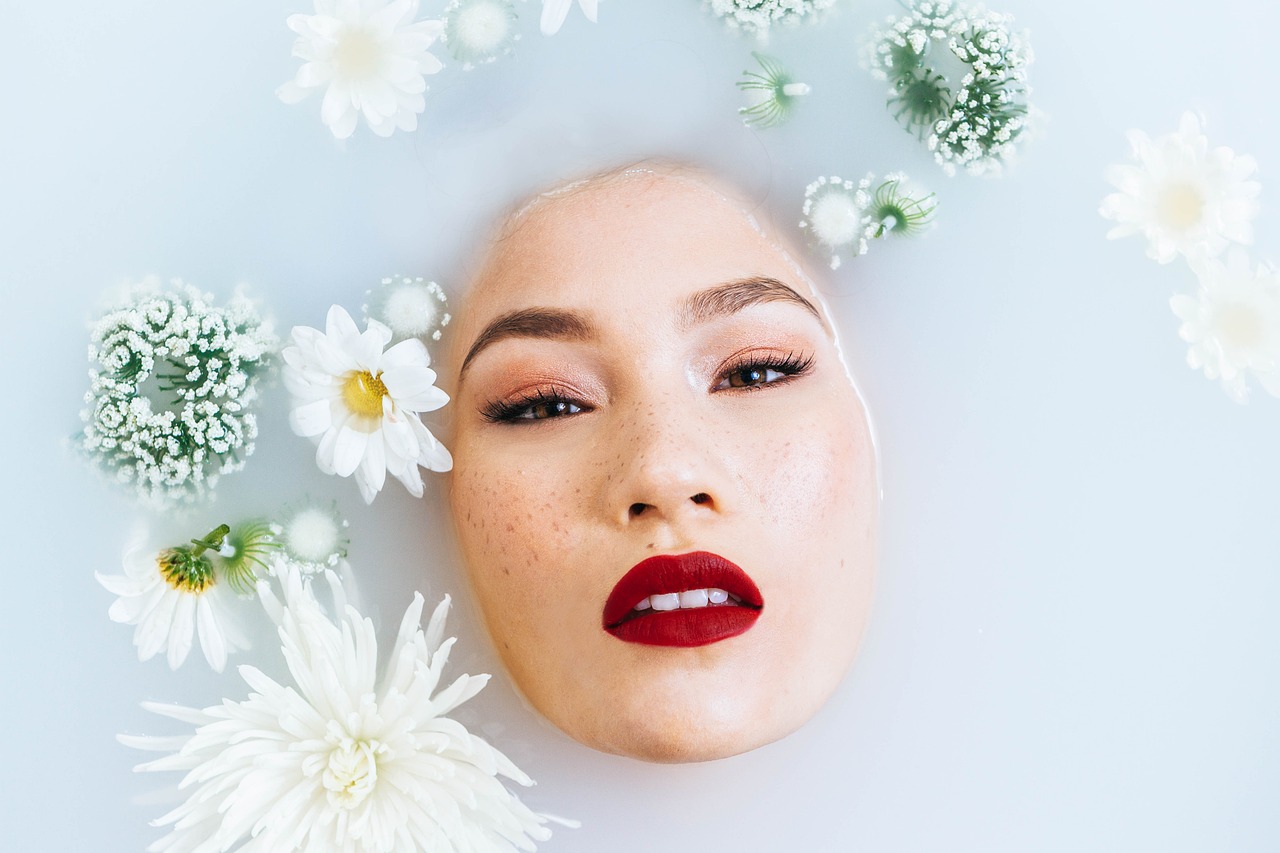We all want to look our best, but there can be so much confusion around makeup application! Here are answers to some of the most common makeup questions we get:
The Most-Asked Makeup Questions, Answered
Concealing Acne
For a flawless foundation application over blemishes, try color correcting first. Use a green color corrector to neutralize redness, then apply your foundation.
Dealing with acne can be frustrating, but achieving a flawless foundation application is still possible! Here’s where color correction comes in. Green color corrector neutralizes redness, the key culprit behind the appearance of pimples.
Think of a color wheel: green sits opposite red. When you apply green color corrector directly on blemishes, it cancels out the red tones, making them appear less inflamed and easier to cover with foundation.
For best results, use a small, pointed brush to apply a tiny amount of green corrector directly onto the pimple. Blend it out gently with a damp beauty sponge, then apply a thin layer of your matching foundation. This creates a smooth, even canvas that effectively hides blemishes.
Understanding Color Correction: makeup questions
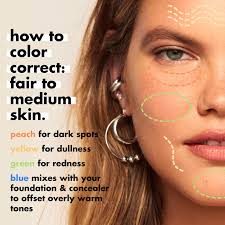
Think of a color wheel: green sits opposite red. This means green counteracts redness. When you apply green color corrector directly on blemishes, it cancels out the red tones, making them appear less inflamed and easier to cover with foundation.
Products You’ll Need:
- Green Color Corrector: Look for a color corrector specifically formulated for acne-prone skin. Here are some popular options:
- Maybelline Master Camo Color Correcting Palette – Green [Link to Maybelline Master Camo Color Correcting Palette]
- NYX Professional Makeup HD Photogenic Concealer Wand – Green [Link to NYX Professional Makeup HD Photogenic Concealer Wand]
- Tarte Shape Tape Concealer in Green [Link to Tarte Shape Tape Concealer]
- Small, Pointed Brush: This allows for precise application directly on blemishes.
- Damp Beauty Sponge: Blends out the color corrector for a seamless finish.
- Foundation: Choose a foundation that matches your skin tone and offers the desired coverage.
Application Tips
For best results, follow these steps:
- Apply a thin layer of moisturizer. This helps hydrate the skin and prevents the makeup from looking cakey.
- Use a small, pointed brush to apply a tiny amount of green corrector directly onto the pimple.
- Gently blend out the color corrector with a damp beauty sponge. Don’t rub, as this can irritate the blemish.
- Apply a thin layer of your matching foundation.
- Set your makeup with a translucent powder to help control shine and ensure your makeup lasts all day.
By following these tips and using the right products, you can achieve a flawless foundation application that effectively hides blemishes.
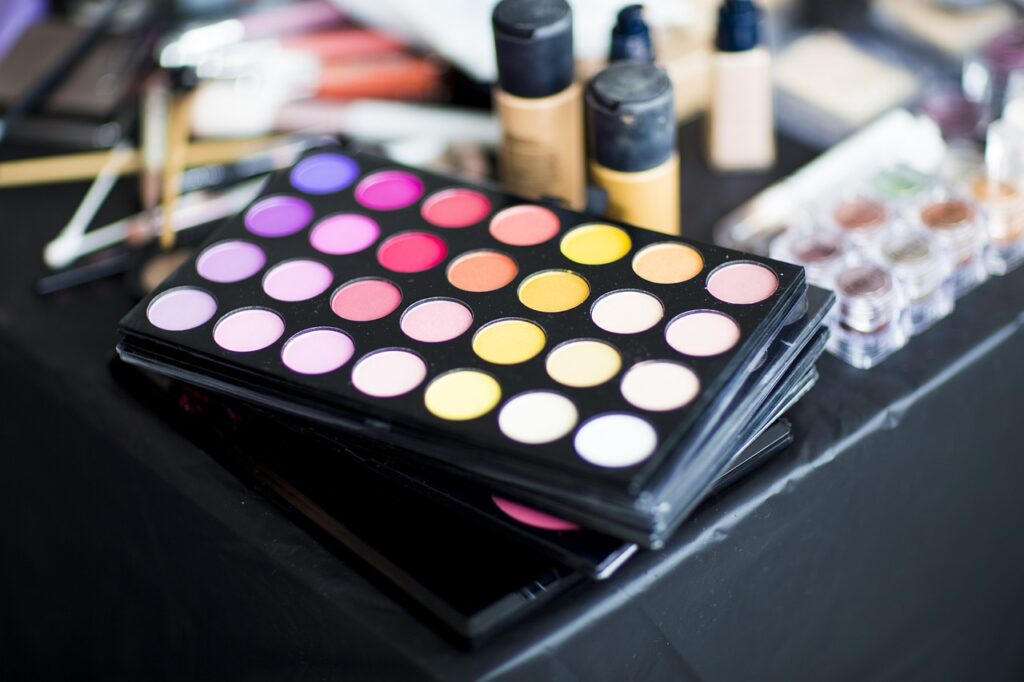
Preventing Makeup Pilling
Makeup pilling can be a frustrating sight – little balls of product collecting on your face instead of creating a flawless finish. But fear not! Here’s how to prevent makeup pilling and achieve a smooth, even base.
Understanding Makeup Pilling
Makeup pilling occurs when different product formulas don’t play well together. Here are the main culprits:
- Layering Incompatible Formulas: Applying a powder product over a cream product, or vice versa, can disrupt how the products sit on your skin.
- Over-Application: Using too much of any product can lead to pilling, as the layers struggle to adhere to each other.
- Exfoliation Issues: A buildup of dead skin cells can also contribute to pilling.
Solutions for Smooth Makeup Application
- Product Compatibility: Pay attention to the formulas of your skincare and makeup products.
- Look for: Lightweight, water-based products for oily skin and hydrating, cream-based products for dry skin.
- Popular compatible product lines:
- e.l.f. Holy Hydration! skincare and foundation [Link to e.l.f. Holy Hydration! line]
- Maybelline Fit Me! Matte + Poreless primer and foundation [Link to Maybelline Fit Me! Matte + Poreless line]
- Less is More: Start with a small amount of each product and build coverage gradually. This allows each layer to dry completely before applying the next.
- Exfoliation is Key: Regularly exfoliate your skin (2-3 times a week) to remove dead skin cells and create a smooth canvas for your makeup.
makeup questions: Products to Help
- Water-Based Moisturizer: A lightweight, water-based moisturizer hydrates the skin without creating a greasy barrier. Popular options include:
- Mattifying Primer: A mattifying primer helps control oil and creates a smooth base for makeup application. Here are some favorites:
- Exfoliating Toner: A gentle exfoliating toner removes dead skin cells without irritation. Try these options:
By implementing these tips and choosing compatible products, you can say goodbye to makeup pilling and achieve a flawless, long-lasting finish.
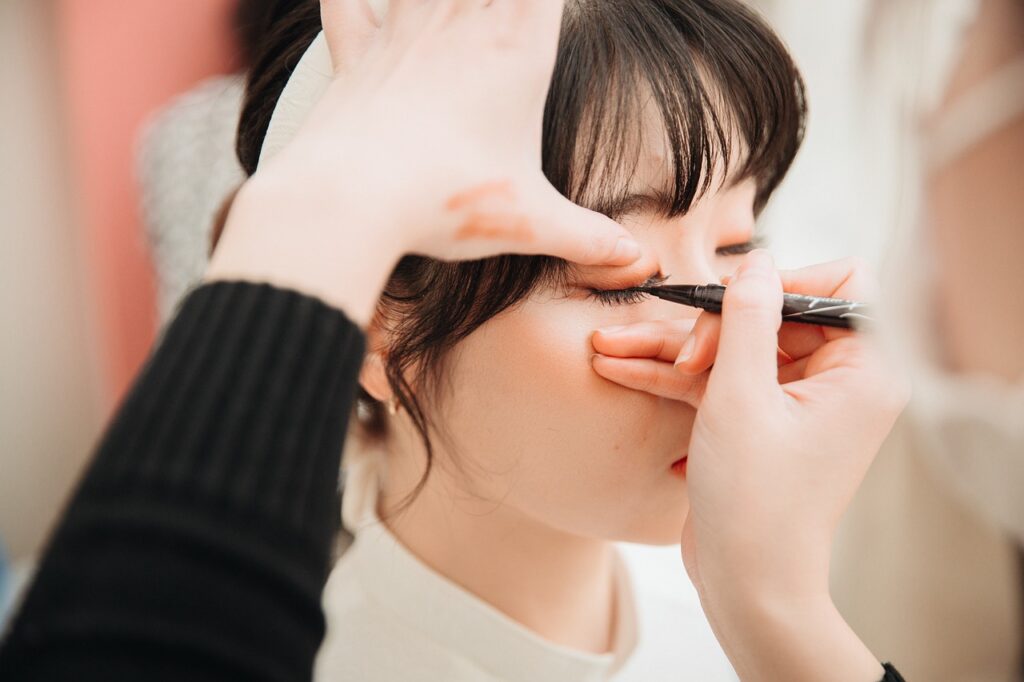
Beyond Just Lines
Lip liner is a makeup artist’s secret weapon, but it can be confusing for everyday use. Here’s a breakdown of lip liner’s various uses to help you achieve defined, beautiful lips:
Defining and Shaping Your Lips
Lip liner excels at creating a precise and defined lip line. This is especially helpful for:
- Uneven Lips: Lip liner can create symmetry and balance for lips with uneven edges.
- Thin Lips: Define and slightly overline your lips with a lip liner shade matching your natural lip color to create the illusion of fuller lips.
- Bold Lipsticks: Lining your lips before applying bold lipstick prevents feathering and bleeding, ensuring crisp lines and long-lasting color.
Products You’ll Need:
- Lip Liner: Choose a lip liner with a sharp tip for precise application. Here are some top-rated options:
- Lip Brush (Optional): A small lip brush can help soften and blend the lip liner for a more natural look.
Filling and Amplifying Your Lips
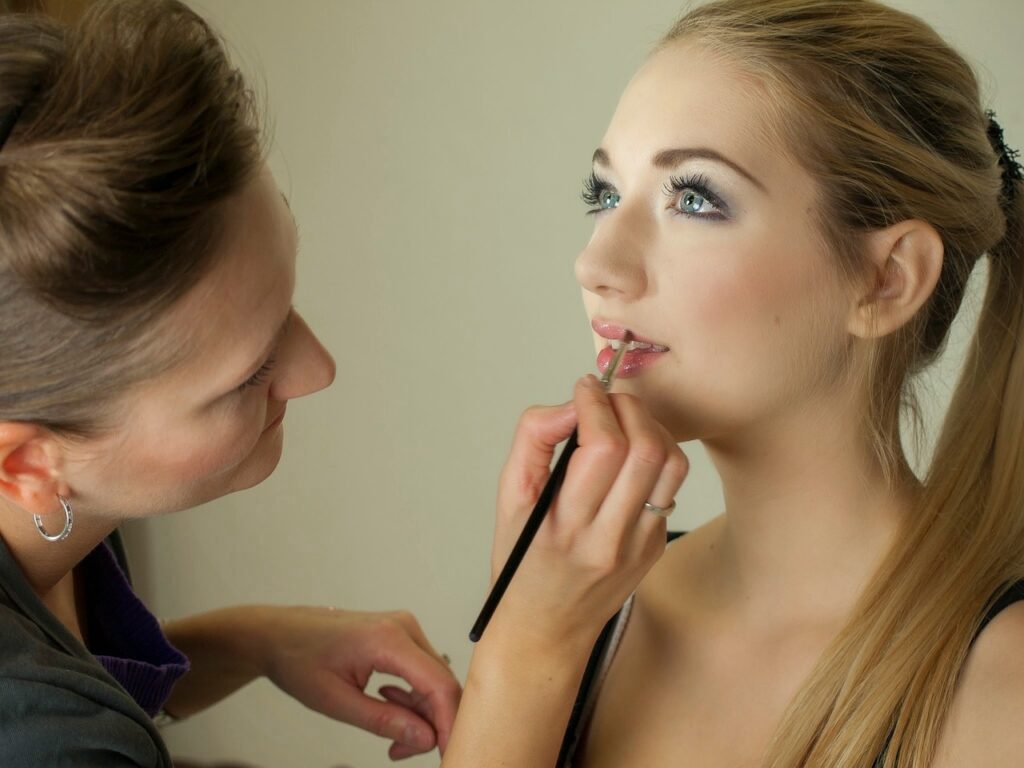
Lip liner isn’t just for lines! Here’s how to use it to enhance your lips:
- Full Lips, Naturally: Fill in your entire lips with a lip liner matching your natural lip color for a fuller appearance without looking overdone.
- Bolder Color Payoff: Want your lipstick to stand out? Fill in your lips with a lip liner that matches your lipstick shade. This creates a base that intensifies the color and extends its wear time.
- Ombre Lips: Create a trendy ombre effect by using a darker lip liner to outline your lips and a lighter shade to fill them in. Blend the two shades for a seamless transition.
Products You’ll Need:
- Lip Liner in Various Shades: Having a range of lip liner shades allows for versatility in creating different lip looks.
- Lip Brush: Essential for blending lip liner when filling in your lips or creating an ombre effect.
By understanding the different uses of lip liner and choosing the right products, you can have perfectly defined, long-lasting, and beautiful lips.
Smudge-Proof Lashes
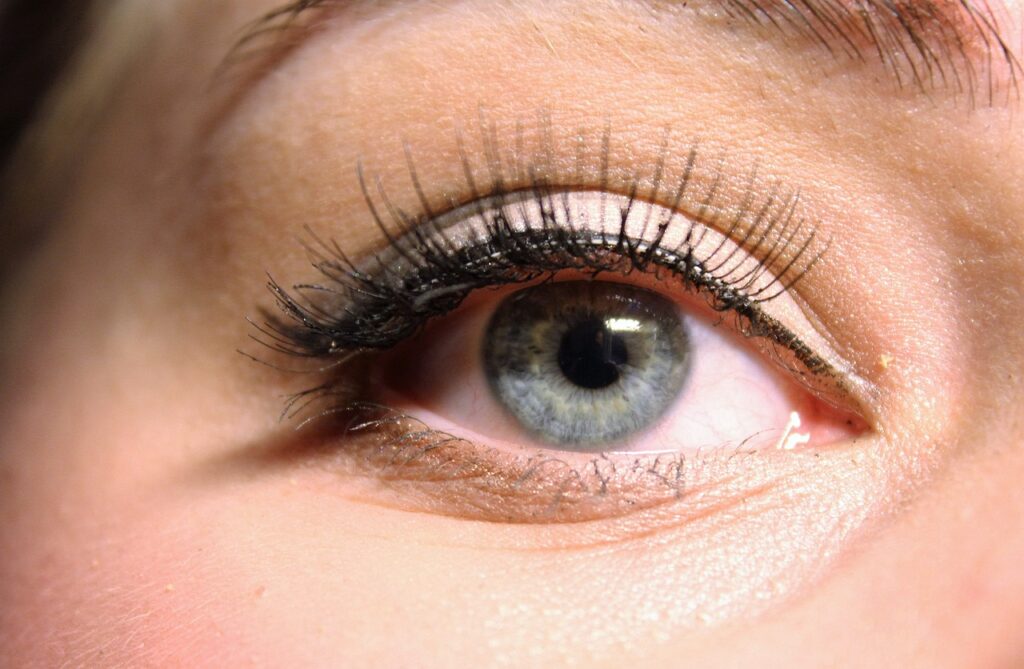
Who wants mascara smudges ruining their perfectly done makeup? Here’s how to achieve smudge-proof lashes that stay put all day long:
The Power of Waterproof Formulas
Waterproof mascaras are formulated to withstand water, sweat, and humidity – the biggest culprits behind mascara smudging. These formulas create a water-resistant barrier around your lashes, locking in color and preventing smudges.
Waterproof Mascara Picks:
- Drugstore Favorites:
- Maybelline Lash Sensational Waterproof Mascara: This drugstore favorite delivers volume and definition with a long-lasting, waterproof formula.
- L’Oreal Paris Voluminous Lash Paradise Waterproof Mascara: This mascara offers dramatic volume and a smudge-proof finish at an affordable price.
- High-End Options:
- Too Faced Better Than Sex Waterproof Mascara: A cult-classic known for its volumizing and lengthening properties, now available in a waterproof version.
- Lancôme Monsieur Big Waterproof Mascara: This luxurious mascara delivers big, bold lashes that won’t budge, thanks to its waterproof formula.
makeup questions: The Matte Finish Advantage
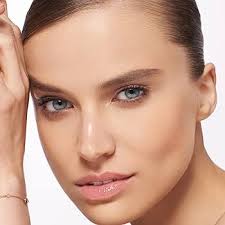
Look for mascaras that dry to a matte finish. While some waterproof mascaras might have a glossy sheen, a matte finish is less likely to transfer or smudge throughout the day.
Mascaras with a Matte Finish:
- Maybelline The Falsies Push Up Drama Waterproof Mascara: This mascara offers a dramatic lash lift and a smudge-proof, matte finish.
- It Cosmetics Superhero Mascara Elite™ – Longwear, Volumizing & Waterproof: This mascara combines intense volume with a lightweight, comfortable, and smudge-proof matte finish.
Beyond Formula: Application Tips
- Start with clean lashes: Apply mascara to clean, oil-free lashes to prevent smudging.
- Use a lash primer: A lash primer creates a base for your mascara, helping it adhere better and preventing smudging.
- Wiggle the wand: As you apply mascara, wiggle the wand from root to tip to coat each lash evenly and prevent clumping.
- Blot, don’t pump: Excess product can lead to smudging. Wipe off any extra mascara on the wand before applying it to your lashes.
- Set your under-eye area: Apply a translucent setting powder under your eyes to catch any mascara fallout and prevent smudging.
By using a waterproof mascara with a matte finish, coupled with these application tips, you can achieve smudge-proof lashes that last all day long.
Applying Lipstick on Dry Lips
Dry lips can be a nightmare for lipstick application – flaking, patchiness, and discomfort are all too common. But fear not! Here’s how to prep your lips for smooth, long-lasting lipstick wear, even on dry days.
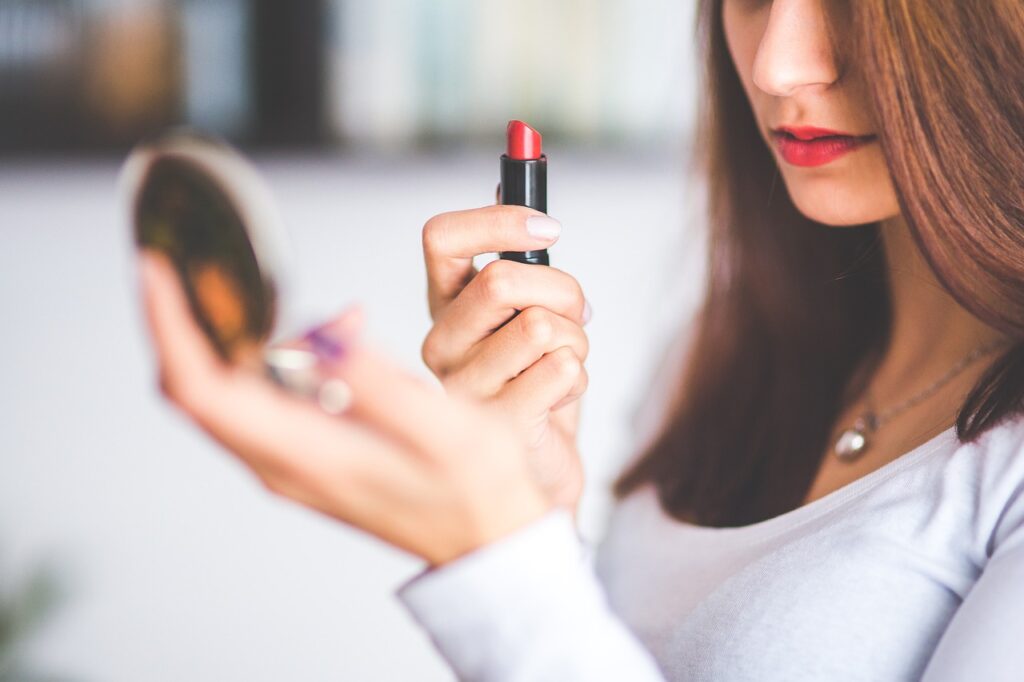
Exfoliation is Key
Just like your face, your lips benefit from regular exfoliation to remove dead skin cells. This creates a smooth canvas for your lipstick and prevents flaking.
Exfoliating Lip Products:
- Sugar Scrubs: Gentle sugar scrubs buff away dead skin cells without irritation. Look for options with nourishing oils like jojoba or shea butter.
- Fresh Sugar Lip Polish [Link to Fresh Sugar Lip Polish]
- Lush Bubblegum Lip Scrub
- Exfoliating Lip Masks: These leave-on treatments combine exfoliating ingredients with hydrating properties for a more intensive treatment.
DIY Lip Scrub: If you prefer a natural approach, you can create a DIY lip scrub by mixing equal parts sugar and honey. Gently massage the mixture onto your lips and rinse with warm water.
Deep Hydration is Essential

Dry lips crave moisture. Here’s how to ensure your lips are properly hydrated before applying lipstick:
- Lip Balm: Apply a thick layer of lip balm 10-15 minutes before applying lipstick. Look for balms with ingredients like hyaluronic acid, shea butter, or coconut oil for deep hydration.
- Aquaphor Healing Ointment
- Laneige Lip Sleeping Mask (can be used as a daytime balm)
- Nighttime Lip Mask: Apply a thick layer of lip mask before bed for an overnight hydration treatment.
- Hydrating Drinks: Don’t forget to stay hydrated from the inside out! Drink plenty of water throughout the day to keep your lips and skin healthy.
Creating a Smooth Base
Once your lips are exfoliated and hydrated, it’s time to create a smooth base for your lipstick:
- Lip Primer: Apply a lip primer to create a barrier between your lips and the lipstick. This helps prevent the lipstick from drying out your lips and keeps the color looking fresh for longer.
By following these steps and using the right products, you can transform your dry lips into a smooth, hydrated canvas perfect for flawless lipstick application.
Finding the Right Foundation Shade
Choosing the right foundation shade can feel like searching for a unicorn – it seems mythical! But fear not! By understanding undertones and applying the right testing techniques, you can find your perfect foundation match.
Understanding Undertones: The Key Beneath the Surface
Foundation shade goes beyond just light, medium, or deep. It’s crucial to consider your undertones, the subtle color cast that shows beneath your skin’s surface. Here’s a breakdown of the three main undertones:
- Cool Undertone: Veins appear blue or purple on your wrist. Your skin might burn easily in the sun and you tend to have cool-toned features like pink or rosy cheeks.
- Warm Undertone: Veins appear green on your wrist. Your skin tans easily and you may have warm-toned features like golden or peachy undertones.
- Neutral Undertone: A mix of both cool and warm tones. Your veins appear blue-green or match your skin tone. You may tan moderately and have a mix of cool and warm features.
Products to Help Identify Your Undertone:
- Silver vs. Gold Jewelry: Hold a silver necklace and a gold necklace against your bare skin. Generally, cool undertones look better with silver, while warm undertones look better with gold. However, this is not a foolproof method, so use it as a guideline.
- Rosy vs. Peach Blush: Apply a cool-toned rosy blush and a warm-toned peach blush to separate areas of your cheek. The shade that complements your skin tone most likely matches your undertone.
Testing Techniques: Finding Your Shade Match
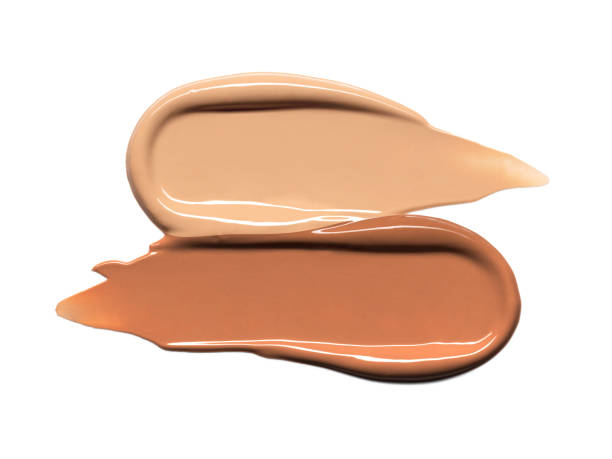
Now that you understand undertones, here’s how to test foundation shades to find your perfect match:
- Natural Light is Key: Always test foundation in natural light, as artificial light can skew the color.
- Jawline is the Sweet Spot: Apply small dabs of different foundation shades along your jawline, where your face meets your neck. This area is the most accurate representation of your overall skin tone.
- Blend and Compare: Blend out the foundation shades with a damp makeup sponge or brush. The shade that disappears seamlessly into your skin is your best match.
Additional Tips:
- Test a Few Shades: Don’t limit yourself to just one or two shades. Test a range of colors to find the perfect match.
- Consider Oxidation: Some foundations oxidize, meaning they darken slightly after application. If you’re unsure, choose a shade slightly lighter to account for this.
- Get Help from a Professional: Makeup stores often have trained consultants who can help you find your perfect foundation shade.
By understanding undertones, using proper testing techniques, and considering these additional tips, you can finally ditch the foundation frustration and achieve a flawless, natural-looking complexion.
Concealer vs. Foundation
Achieving a flawless base involves applying makeup products in the right order. Here’s why foundation should always come before concealer:
Why Foundation First?
Applying concealer before foundation can lead to a cakey, heavy makeup look. Here’s why:
- Coverage Levels: Foundation provides a sheer to medium base, while concealer offers higher coverage for targeted areas. Applying foundation first evens out your skin tone, creating a smooth canvas for concealer to address specific imperfections.
- Blending Issues: Layering concealer over foundation can make blending difficult. The concealer can resist blending seamlessly with the foundation already on your skin.
The Foundation First Routine
Here’s the step-by-step guide to applying foundation before concealer:
- Prep Your Skin: Start with a clean, moisturized face. Apply a primer suitable for your skin type to create a smooth base for makeup application.
- Apply Foundation: Choose a foundation that matches your skin tone and offers the desired coverage. Apply a thin layer of foundation all over your face using a damp beauty sponge, brush, or your fingertips. Blend thoroughly for a natural finish.
- Conceal Imperfections: Now that your base is even, use concealer to target specific areas like blemishes, dark circles, or redness. Dab a small amount of concealer directly onto the imperfections and blend it out with a damp beauty sponge or a small concealer brush.
Products You’ll Need:
- Foundation: Here are some foundations with a range of finishes and coverages:
- Full Coverage: Estée Lauder Double Wear Stay-in-Place Makeup
- Medium Coverage: Maybelline Fit Me! Matte + Poreless Foundation
- Lightweight Coverage: Giorgio Armani Luminous Silk Foundation
- Concealer: Choose a concealer that offers slightly more coverage than your foundation and matches your undertones:
- Creamy Concealer: NARS Radiant Creamy Concealer
- Full Coverage Concealer: Tarte Shape Tape Concealer
Achieving a Flawless Finish
By applying foundation first and then using concealer strategically, you create a flawless base that looks natural and lasts all day. Remember, less is often more! Apply products in thin layers and blend thoroughly to avoid a cakey appearance.
Choosing the Right Makeup Brush
Choosing the right makeup brush can feel overwhelming with all the different shapes and sizes available. But fear not! Here’s a breakdown of brush types and their ideal uses to help you build your perfect makeup brush collection:
Brush Types and Their Functions
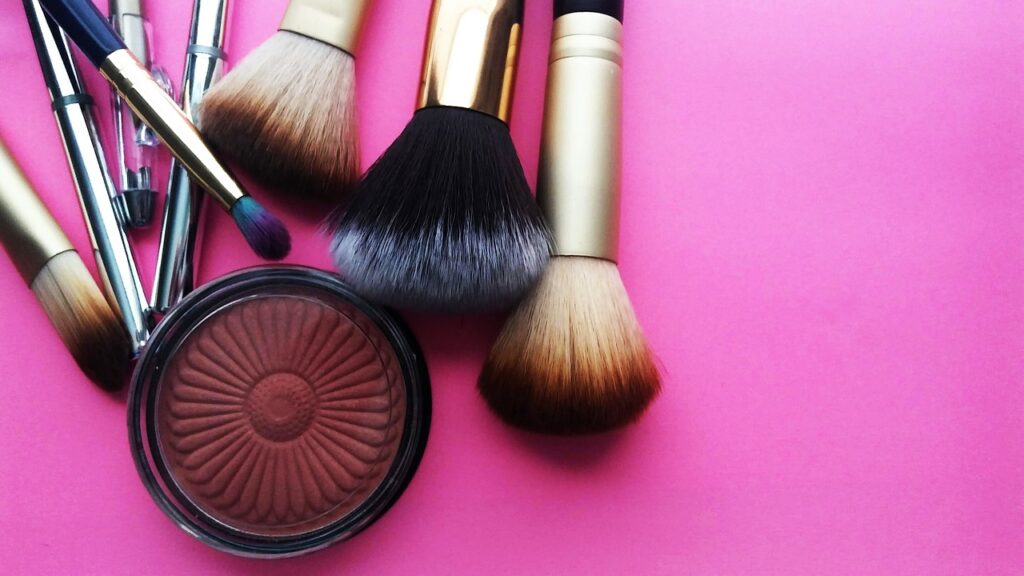
- Fluffy Brushes: As the name suggests, these brushes have soft, fluffy bristles that are ideal for applying powder products. The loose bristles allow for even distribution and blending of the product, creating a soft, natural finish.
- Products to Use With: Powder foundation, blush, bronzer, setting powder, finishing powder
- Popular Fluffy Brushes:
- Powder Brush:This large, rounded brush is perfect for applying powder foundation all over your face for a sheer, even layer.pen_spark Powder Makeup Brush
- Blush Brush:This medium-sized, angled brush helps apply and blend blush for a natural flush of color. Blush Makeup Brush
- Bronzer Brush:Similar to a blush brush but slightly larger, this brush is used to apply bronzer for a sun-kissed look. Bronzer Makeup Brush
- Flat Brushes: These brushes have densely packed, flat bristles that offer more control and precision when applying makeup. They work well with cream and liquid products to buff them seamlessly into the skin.
- Products to Use With: Foundation, concealer, cream blush, cream bronzer
- Popular Flat Brushes:
- Foundation Brush:This brush helps apply and blend liquid or cream foundation for a flawless, full-coverage finish.Foundation Makeup Brush
- Concealer Brush:This small, flat brush allows for precise application of concealer to target blemishes, dark circles, or redness. Concealer Makeup Brush
- Angled Blush Brush:This brush has angled bristles that hug the contours of your cheekbones, making it perfect for applying and blending cream or liquid blush. Angled Blush Makeup Brush
Additional Brush Considerations
- Material: Natural fibers like goat hair are softer and better suited for powder products. Synthetic fibers are firmer and work well with cream and liquid products.
- Density: Denser brushes offer more coverage, while less dense brushes provide a lighter application.
- Size and Shape: The size and shape of the brush will determine how much product is applied and where it’s placed on the face.
Building Your Brush Collection
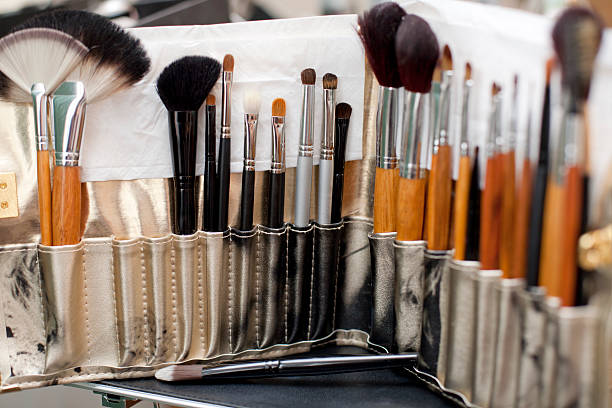
Start with a core set of brushes that cover the basics:
- Powder Brush
- Blush Brush
- Foundation Brush
- Concealer Brush
As you get more comfortable with makeup application, you can expand your collection with specialized brushes for eyeshadow, contouring, and highlighting.
By understanding the different brush types, their functions, and additional considerations, you can choose the right makeup brushes to achieve a flawless and effortless makeup application.
Creating a Flawless Cat Eye
The cat eye is a timeless makeup look that adds drama and definition to the eyes. But achieving perfect symmetry with that winged eyeliner can be tricky. Here are some tips and tricks to help you create a flawless cat eye:
The Power of Prep
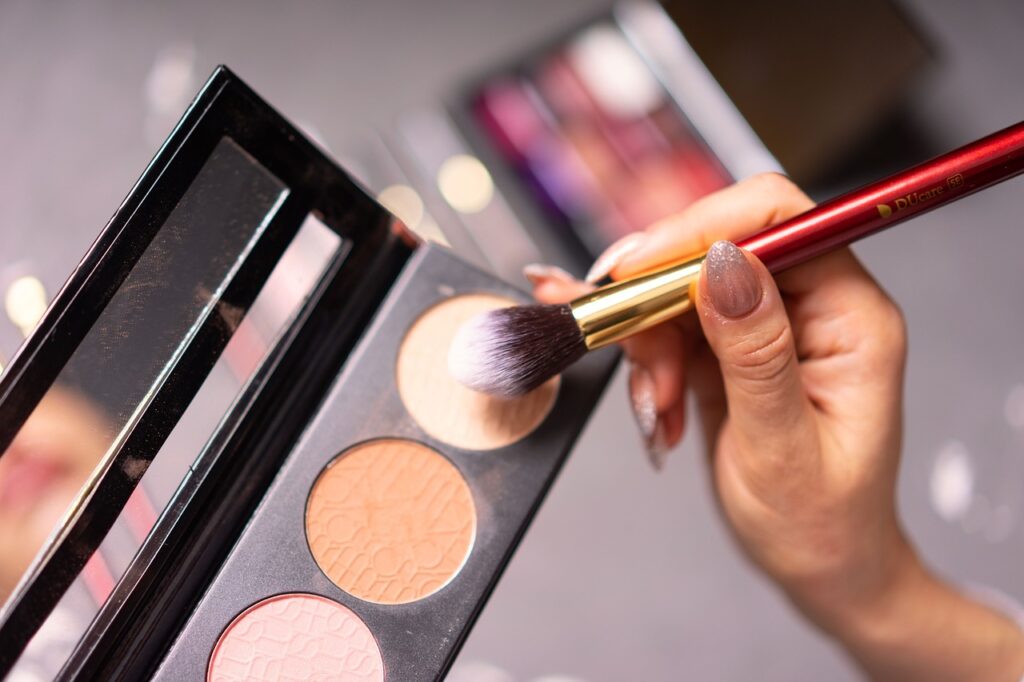
Before diving into eyeliner, ensure your eyelids are prepped for a smooth and long-lasting application:
- Apply Eyeshadow Primer: A primer creates a smooth base for your eyeliner, preventing it from smudging or skipping throughout the day.
- Optional: Neutral Eyeshadow: Applying a neutral eyeshadow in a shade close to your skin tone can help even out any discoloration on your eyelids and create a better base for eyeliner.
Products to Use:
- Eyeshadow Primer:
- Neutral Eyeshadow:
Reaching for the Right Tools
- Eyeliner: Choose an eyeliner formula that works best for you. Here are some popular options:
- Liquid Eyeliner: Offers the most precise application for creating sharp wings. However, it can be trickier to master for beginners.
- Gel Eyeliner: Provides a more forgiving application than liquid eyeliner and allows for easier blending if you make a mistake.
- Maybelline Eye Studio Lasting Drama Gel Eyeliner
- Pencil Eyeliner: A great option for beginners as it’s easy to smudge for a softer look. However, it may not be ideal for achieving a sharp wing.
- Angled Eyeliner Brush (Optional): This brush offers more control and precision when applying gel or liquid eyeliner.
- Tape (Optional): This can be a helpful guide to achieve symmetrical wings.
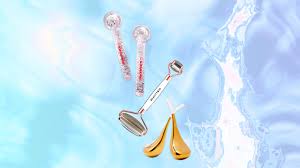
The Art of the Wing: Step-by-Step
- Start with a Thin Line: Begin by lining your upper lash line starting from the inner corner and working your way outwards. Keep the line thin and close to your lashline.
- Create the Wing: There are different ways to create the wing, but here’s a common technique: Imagine extending your lower lash line outwards in a straight line. This imaginary line is where the tip of your wing should be. Use small strokes to draw a line upwards from the outer end of your lash line, meeting your imaginary line.
- Thicken and Refine: Once you have the basic wing shape, you can thicken the eyeliner to your desired look. If your wing isn’t symmetrical, use a cotton swab dipped in makeup remover to clean up any mistakes.
- Line the Waterline (Optional): Tightlining your waterline with eyeliner can further define your eyes. However, this can be a tricky step and may not suit all eye shapes.
The Tape Trick:
For perfectly symmetrical wings, use a small piece of tape placed at the outer corner of your eye, angled upwards towards your temple, following your imaginary wing line. Apply your eyeliner as usual, then carefully remove the tape to reveal a clean, sharp wing.
Additional Tips
- Use a Light Hand: Start with a light hand and gradually build up the intensity of your eyeliner.
- Rest Your Elbow: Lean your elbow on a stable surface to steady your hand for a more precise application.
- Practice Makes Perfect: Don’t get discouraged if you don’t achieve a perfect cat eye on the first try. Keep practicing, and you’ll master the technique in no time!
With the right tools, techniques, and a little practice, you can create a flawless cat eye that adds drama and definition to your makeup look.
Preventing Greasy Skin
Greasy skin can wreak havoc on your makeup, causing foundation to slide and mascara to smudge. But fear not! Here’s a two-pronged approach to keep your skin shine-free and your makeup looking flawless all day long:
Skincare for Balanced Skin
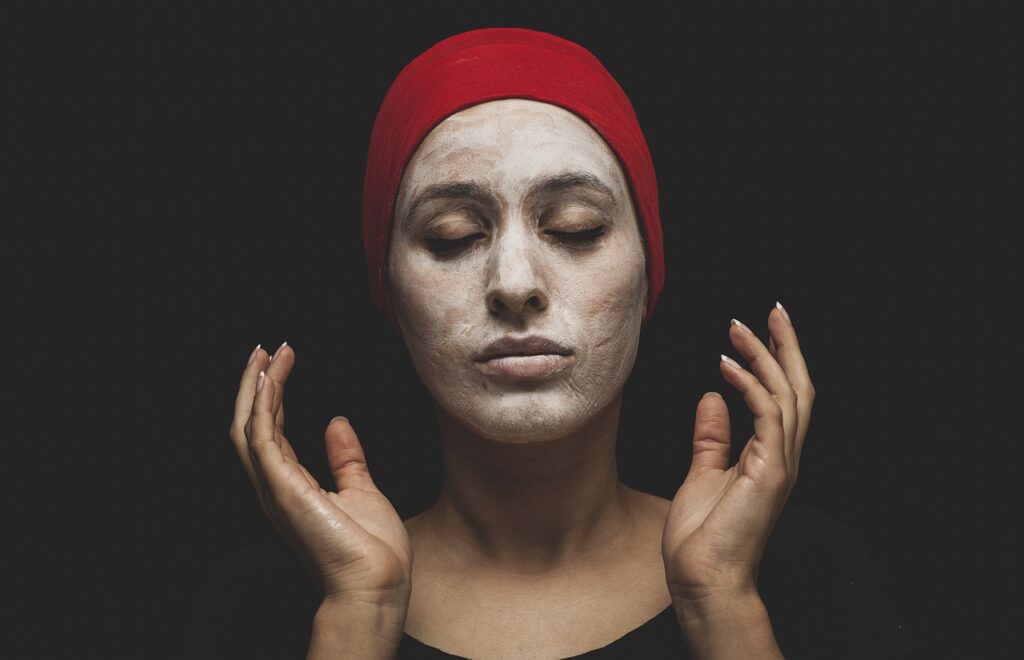
The foundation for a matte makeup look starts with a well-balanced skincare routine. Here are some key strategies:
- Cleanse Wisely: Wash your face twice daily with a gentle, oil-free cleanser. Look for cleansers labeled “foaming” or “gel” as these formulas are more effective for oily skin.
- Exfoliate Regularly: Exfoliation removes dead skin cells that can clog pores and contribute to oiliness. Exfoliate 2-3 times a week with a gentle exfoliating cleanser or toner.
- Products to Use:
- The Ordinary AHA 30% + BHA 2% Peeling Solution (Note: This is a potent formula, so a patch test is recommended before use)
- Paula’s Choice Skin Balancing Pore-Reducing Toner
- Products to Use:
- Moisturize, But Not Too Much: Don’t skip moisturizer! Oily skin still needs hydration to prevent overproduction of oil. Opt for lightweight, oil-free moisturizers labeled “gel” or “lotion.”
- Incorporate Mattifying Treatments: Consider using mattifying serums or lotions throughout the day to control shine. These products absorb excess oil without drying out your skin.
Makeup Must-Haves for Shine Control
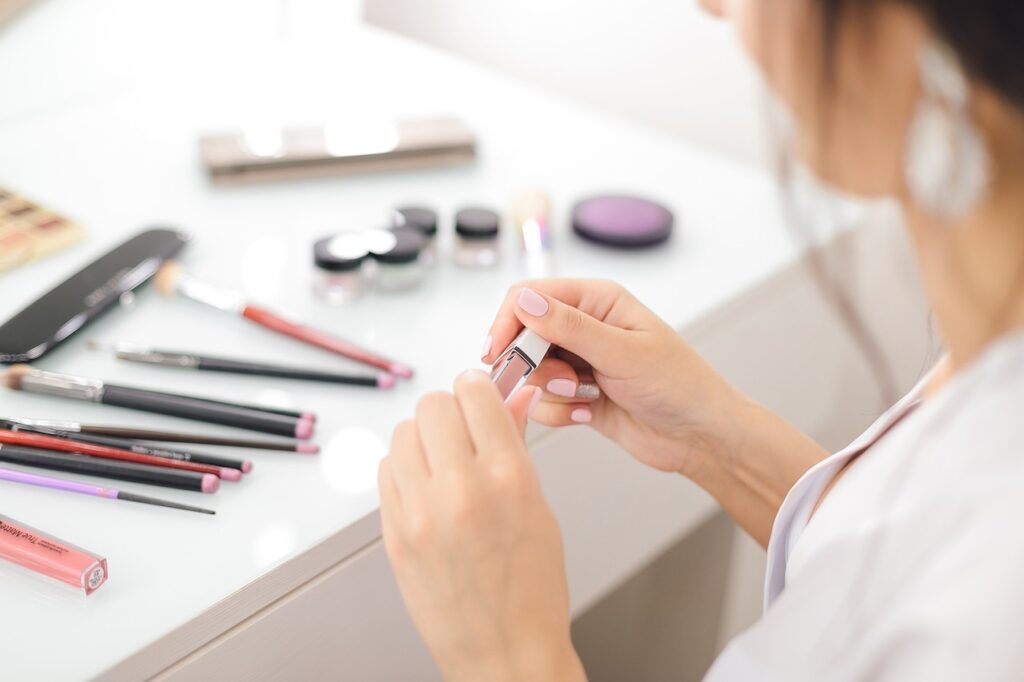
Once your skin is prepped, choose makeup products formulated for oily skin. Here are your heroes for a matte finish:
- Mattifying Primer: Apply a mattifying primer after your moisturizer and sunscreen to create a smooth canvas and minimize shine throughout the day.
- Matte Foundation: Choose a foundation labeled “matte” or “full coverage” for long-lasting shine control. Apply a thin layer with a brush or sponge, focusing on areas prone to oiliness.
- Setting Powder is Key: Setting powder is your ultimate weapon against shine. Apply a translucent setting powder all over your face, focusing on your T-zone (forehead, nose, and chin). Reapply throughout the day as needed with a blotting sheet or powder puff.
By implementing these skincare and makeup tips, you can effectively control shine and achieve a long-lasting, matte makeup look that keeps you feeling confident all day long.
makeup questions: Summary
Looking your best with makeup doesn’t have to be confusing! This guide covers frequent makeup questions and offers solutions for common problems.
Here are some of the key takeaways:
- Concealing blemishes: Apply green color corrector before foundation to neutralize redness from pimples.
- Preventing makeup pilling: Use compatible skincare and makeup products, avoid over-application, and exfoliate regularly.
- Lip liner: Line your lips to define them, create fuller appearance, or prevent lipstick from bleeding.
- Smudge-proof lashes: Use waterproof mascara with a matte finish and apply with proper technique.
- Applying lipstick on dry lips: Exfoliate and hydrate lips before applying lipstick.
- Finding the right foundation shade: Consider undertones when choosing a foundation shade.
- Concealer vs. foundation: Apply foundation before concealer for a flawless, natural look.
- Choosing the right makeup brushes: Different brushes are suited for different products (powder, cream, liquid).
- Creating a flawless cat eye: Use eyeshadow primer, the right eyeliner formula, and practice your technique.
- Preventing greasy skin: Maintain a balanced skincare routine and use mattifying makeup products.
By following these tips and using the recommended products, you can achieve a flawless makeup look that lasts all day.

Explore more articles like this @ Where And How Resources
If you found this article about Budget Skincare Secrets helpful, don’t forget to share it with your friends and followers!
